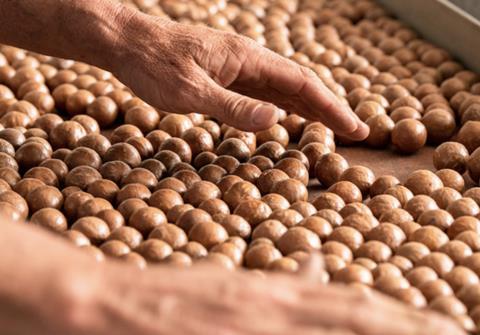Annual Horticulture Statistics Handbook shows total production value up 4.3 per cent year-on-year
Australia’s horticulture sector has seen a 4.3 per cent growth in total production value to A$17bn, according to new comprehensive industry data released by Hort Innovation.

The Australian Horticulture Statistics Handbook 2023/24 details a year of grower resilience, with overall production increasing by 6.6 per cent to 6.89mn tonnes. Export volumes also rose by 8.7 per cent, while export values reached a record high of almost A$3bn, led by almonds, citrus, macadamias, avocados, and stonefruit.
Fruit saw huge growth, with berries, bananas and citrus all climbing substantially in value. Citrus broke a new record, reaching more than A$1bn in value for the first time.
Fresh market supply expanded by 4.3 per cent, supported by strong production in watermelons, avocados, strawberries, and potatoes.
Australian nut production also rose significantly in value terms, with almonds up 63.3 per cent, and macadamias by 94.1 per cent.
Brett Fifield, chief executive of Hort Innovation, said the figures demonstrated the incredible resilience and capability of Australian growers.
“From driving export growth to meeting local demand, our horticulture industry has once again proven its strength as a cornerstone of our agricultural economy,” he said. “This year’s results reflect a commitment to innovation, sustainability, and quality production, which position Australia as a competitive force globally.”
While the strong numbers are worth celebrating, Fifield also pointed out the increased costs for Australian growers.
“While these are strong numbers, it’s important to also remember Australian horticulture is facing historic highs when it comes to production costs like labour, energy, capital and inputs like fertiliser,” he said.
“Our growers, industry partners, and research bodies have worked together to achieve these outcomes. Whether it’s adopting new technologies, expanding into export markets, or meeting sustainability goals, this success is a collective achievement. We’re excited to continue building on this strong foundation to ensure future growth for the sector.”
Fifield said this year’s growth was further supported by mostly favourable growing conditions, improved yields from maturing plantings, and strategic advancements in global export markets.
Berry grower, James Kellaway of Oz Group Co-Op, said shifting consumer preferences had expanded opportunities for berry growers.
“Blueberries, raspberries and blackberries have seen a large increase in production over the last 12-18 months. We can attribute this growth to increased consumer and supermarket demand, and the diversity of market opportunities for blueberry exports,” Kellaway said.
“As people are changing the way they eat, leaning more into snacking as they navigate their busy lives, berries are providing a versatile treat they can indulge in on the go. We really are seeing more and more people treat them like nature’s lollies.”
Kellaway added that new berry genetics and expanded market access into Asia should see Australia’s berry industry continue to grow.
“With more new berry plants feeding the market, we are seeing an increase in the characteristics consumers are looking for in the fruit including bigger berries, better crunch, and sweeter flavour - all things we hope will continue to drive demand into the next 12 months and beyond.”



